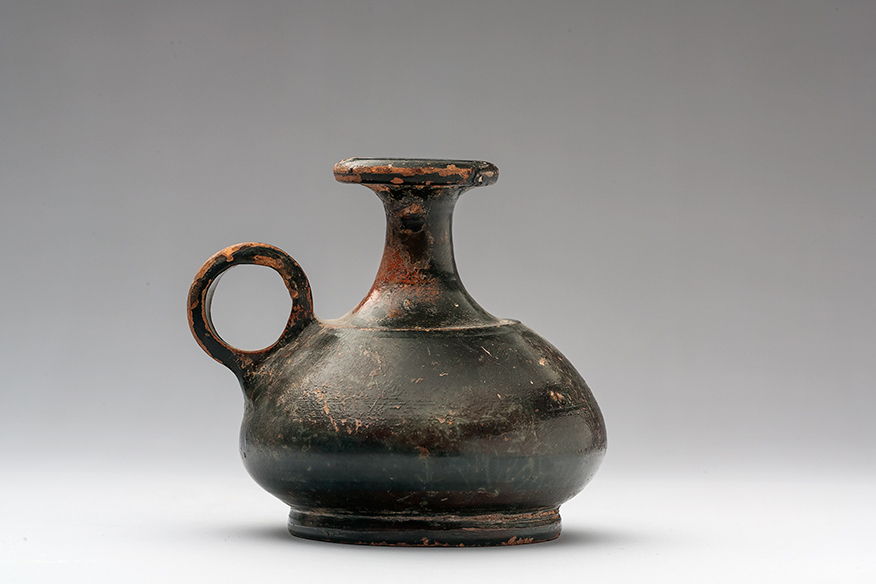Acquisition number: 1985.12
Attic Black-Glaze Guttus.
Intact but for some wear about the lip which has a small area of restoration. The spout rises from the centre of the vessel and has a simple lip. There is a step at the junction of neck and shoulder. Ring handle with two grooves down the outer face. Ring foot.
Lustrous black glaze, somewhat misfired on the neck in the area of the handle. There are no reserved areas (the underside is also painted). Fingermarks about the base are probably evidence that the vase was dipped.
Title: Attic Black-Glaze Guttus - 1985.12
Acquisition number: 1985.12
Author or editor: J.R. Green
Culture or period: Greek Classical.
Date: Mid 4th century BC.
Material: Clay - Terracotta
Object type: Vessels - Guttus
Dimensions: 85mm (w) × 89mm (h)
Origin region or location: Greece
Origin city: Athens.
Display case or on loan: 4
Keywords: Greek, Classical, Attic, Black Glaze
Charles Ede Ltd (London), Antiquities137 (1985) no. 12 (ill.).
1985.12
Attic Black-Glaze Guttus
Purchased. Ht 8.9cm; diam. 8.5cm.
Intact but for some wear about the lip which has a small area of restoration. The spout rises from the centre of the vessel and has a simple lip. There is a step at the junction of neck and shoulder. Ring handle with two grooves down the outer face. Ring foot.
Lustrous black glaze, somewhat misfired on the neck in the area of the handle. There are no reserved areas (the underside is also painted). Fingermarks about the base are probably evidence that the vase was dipped.
Mid-fourth century BC. Cf. B.A. Sparkes and L. Talcott, The Athenian Agora xii: Black and Plain Pottery (Princeton 1970) pl.39, 1194. It is likely that the vessel served to hold table-oil, like the askos (compare 1965.03 in this catalogue).
Charles Ede Ltd (London), Antiquities137 (1985) no. 12 (ill.).
Intact but for some wear about the lip which has a small area of restoration.
